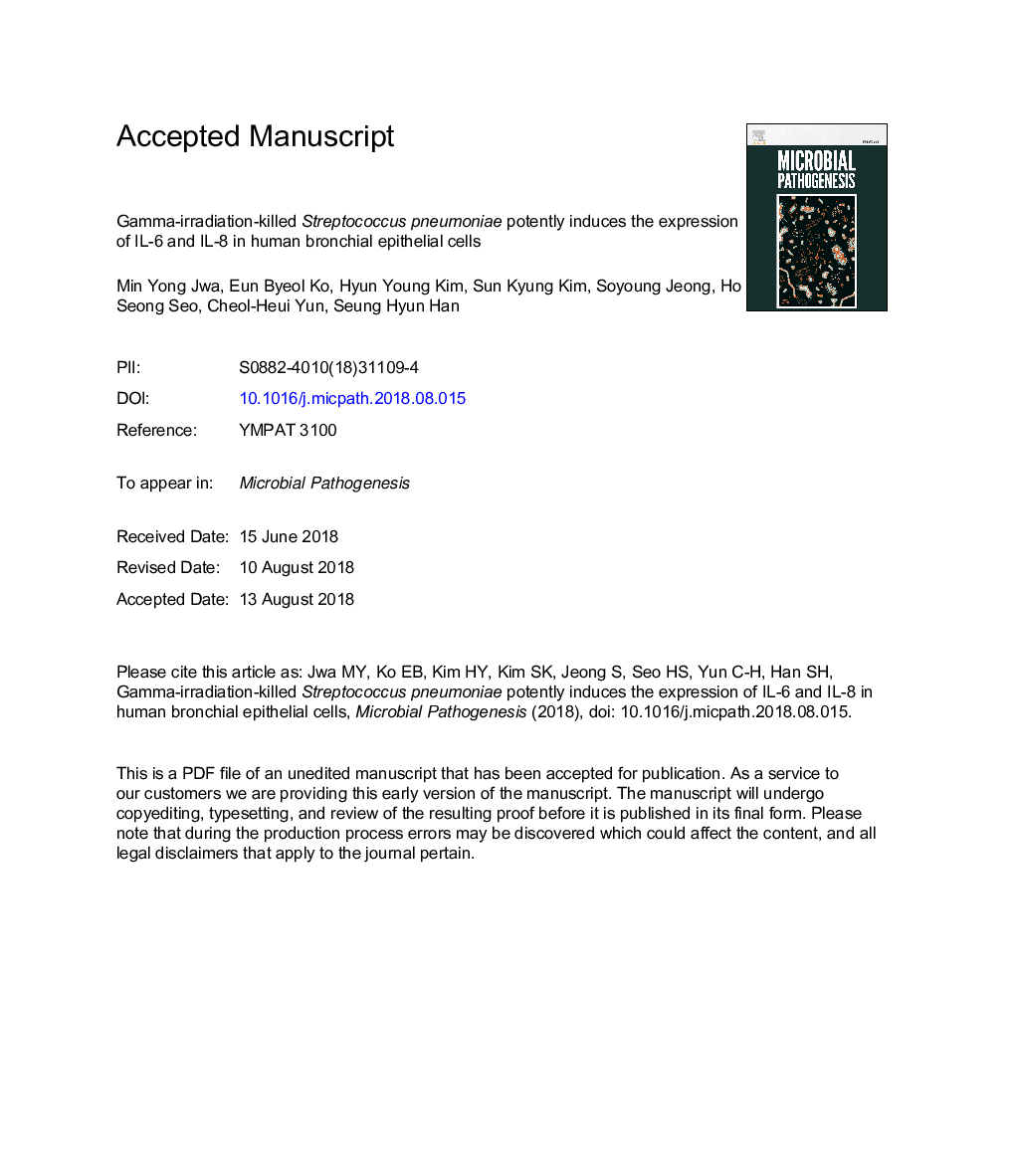| Article ID | Journal | Published Year | Pages | File Type |
|---|---|---|---|---|
| 8944965 | Microbial Pathogenesis | 2018 | 37 Pages |
Abstract
Streptococcus pneumoniae is a major respiratory pathogen that can cause pneumonia, meningitis, and otitis media. Although capsular polysaccharide-based vaccines are commercially available, there is a need for broad-spectrum, serotype-independent, and cost-effective vaccines. Recently, an intranasal vaccine formulated with gamma-irradiated nonencapsulated S. pneumoniae whole cells has been developed and its immunogenicity is under investigation. Since innate immunity influences the subsequent adaptive immunity, in the present study, we investigated the immunostimulatory activity of gamma-irradiated S. pneumoniae (r-SP) in the human bronchial epithelial cell-line, BEAS-2B, by comparing with heat-inactivated S. pneumoniae (h-SP) and formalin-inactivated S. pneumoniae (f-SP). r-SP potently induced interleukin (IL)-6 and IL-8 at both mRNA and protein levels in a dose- and time-dependent manner, whereas h-SP and f-SP poorly induced them. Of note, the mRNA levels of IL-6 and IL-8 were approximately two-fold higher when cells were stimulated with 3â¯Ãâ¯107â¯CFU/ml of r-SP for 3â¯h, while the protein levels of IL-6 and IL-8 were approximately five-fold higher after stimulation with 3â¯Ãâ¯107â¯CFU/ml of r-SP for 24â¯h. Furthermore, r-SP exhibited potent activation of Toll-like receptor 2 compared with h-SP or f-SP. The expression of IL-6 and IL-8 induced by r-SP was mediated through the activation of mitogen-activated protein kinases. Remarkably, when r-SP was further treated with heat or formalin, there was a decrease in the aforementioned activities. Taken together, we suggest that r-SP stimulates the human respiratory epithelial cells to produce the cytokines IL-6 and IL-8, which might influence the induction of adaptive immune responses.
Related Topics
Life Sciences
Immunology and Microbiology
Microbiology
Authors
Min Yong Jwa, Eun Byeol Ko, Hyun Young Kim, Sun Kyung Kim, Soyoung Jeong, Ho Seong Seo, Cheol-Heui Yun, Seung Hyun Han,
